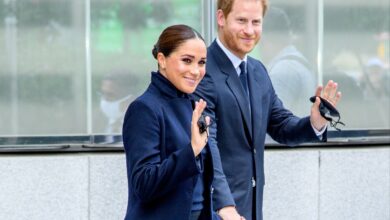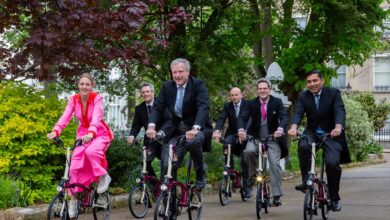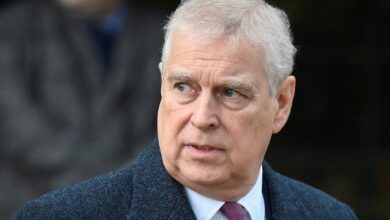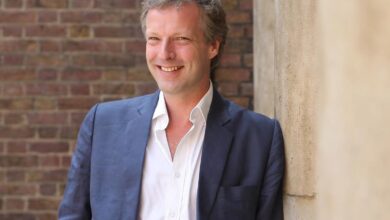The accidental monarch: Charting 70 years of Queen Elizabeth II

You have to be more than 80 years of age now to have much memory of any monarch except Elizabeth II. Her 70-year reign is the longest in English and British history (bearing in mind the long history of monarchy in Scotland). The reason for this is partly a matter of genes — the Queen mother lived to 101 — and the short life and reign of her father George VI, who died on February 6 1952, aged 56.
George VI was a lifelong worrier and smoker who famously never intended nor ever wished to be head of state. He became King because his elder brother, Edward VIII abdicated, and he saw out the stresses of the existential war with Germany. By the same token, then, Britain’s longest serving monarch is also one of its “accidental” ones. A happy accident, that is.
It’s been quite a span of history. The Queen’s first prime minister, of 14 (a dozen men, two women), was Winston Churchill. He was born in 1874, fought in the Boer War, had served in Asquith’s cabinet before the Great War, and of course saved the nation. At not quite 80 when she granted the old man his first audience as his sovereign, he wasn’t quite ready to retire.
Maybe that example was something that strengthened her determination to fulfil the vows to serve the Commonwealth she made as an earnest 21-year old, and were to be made before God at her coronation in 1953. Though difficult to believe now, such was the popularity of Princess Diana and Prince Charles (in that order) in the 1980s that otherwise deferential folk thought she might like to retire aged 60 (a landmark she reached in 1986). Just as well she didn’t.
Like Victoria before her, the Queen’s reign was an age of revolutionary economic, social and technological changes. Elizabeth II is a shrewd observer of the scene. She adapts, and does not much seek to stymie, still less reverse societal change. She knows that is not her role. The British monarchy has lasted as long as it has because it moved with the times, or at least only a few steps behind them and the incumbents, with rare exceptions, understood that they rule only with the assent of the people.
The Britain of 1952 is almost unrecognisable today. A citizen of the time delivered here now via time capsule would take some effort to understand the volume of cars and lorries on the roads, planes in the air, and televisions and computers in the home. Prices would be unimaginable too, to someone whose wage was, say, £9 a week, but so too are standards of living impossibly grand – no rationing any more, but vast supermarkets, and exotic holidays, central heating, space tourism, the internet. A nation once powered by coal now relies on the sun and the wind.
The nation looks different now, as a multicultural society, and our time traveller might wonder what became of the Empire. The way we lived was different back in 1952. It was the most homophonic era in British history. Gay sex was not only illegal but gay men were entrapped and persecuted — John Gielgud was arrested in 1953, and Alan Turing took his own life after arrest and “treatment” in 1954. Turing was pardoned by the Queen in 2013.
Yet we still have some (mostly) cherished traditions — the NHS, the BBC and the monarchy. And of course we still have a Tory government, occasionally interrupted by Labour and, scarcely believable in 1952, a brief moment when the Liberals returned to power. Before rock and roll, before the Sex Pistols sang “God Save The Queen”, before raves. Britain was much quieter in 1952, and sang more hymns.
Each and every change has been accepted and publicly acknowledged by the monarch. She gives every sign of being socially tolerant as head of the multiracial, multicultural commonwealth and at ease with a diverse Britain. She did not visit apartheid South Africa, and was uncomfortable with the Thatcher government’s indulgent attitude towards it. You might say Elizabeth II is a woke icon.
The Queen shared the national enthusiasm at the marriage of Harry and Meghan, and regrets what the media did to them (and to every other member of her family, including herself). As early as the mid-1950s the papers were intruding into the love life of her sister, Princess Margaret and published rumours of a rift in her own relationship with Philip, only finally confounded when Prince Andrew was born in 1960.
Elizabeth II delivered the first television Christmas broadcast in 1957, and lived long enough to witness a Channel 4 Deepfake version that has her dancing on the table. She’s been played by Helen Mirren, Prunella Scales, Olivia Colman, Stanley Baxter, a Spitting Image puppet and many others. Thanks to Netflix she’s been discovered by a new global audience. She’s on Twitter, after a fashion. And although Tony Benn tried to get her head removed from the postage stamps, with the possible exception of chairman Mao, she is the person whose image has been printed more times than anyone in the history of the world. She obviously enjoyed the spoof James Bond video she made for the 2012 Olympics; but she had a real ex-Russian spy in her palace looking after the artworks for many years, Sir Anthony Blunt, whose past was revealed in 1979. It’s been a reign full of surprises.
The existence of the monarchy was taken as read in 1952, but at some points in the ensuing 70 years it has been in jeopardy. Politicians asked questions about whether certain members of the family worked hard enough, if they paid enough tax, and pointed out how out of touch they seemed. Despite the decline in deference and a modest rise in republican sentiment from the late 1950s, the 1970s and 1980s saw a remarkable resurgence in popularity.
The crises that befell the family in the 1990s were a mix of the personal and political — the tabloid press and its readers, it must be said, gorged on royal affairs, separations and divorces. The aftermath of the death of Diana in 1997 saw Tony Blair advising and guiding the Queen in exemplary fashion. Maybe not everyone appreciated, then or now, what a dangerous moment that was, when familial reticence and privacy was mistaken for coldness of heart, but it was Blair’s instinct for public opinion that was key to avoiding more ugliness. She went on television and spoke from the heart. At that moment of crisis it was the now Sir Tony Blair who provided his sovereign with the most valuable personal advice.
For her part, Elizabeth II’s greatest hour was surely in the pandemic. Her address to the nation — “we will meet again” — was graceful, moving, and inspiring. The lonely example she set at the funeral of Prince Philip, as we now know, stood in stark contrast to what was going on in Downing Street. You wonder what she makes of her present prime minister, the first to have had to issue a public apology to their monarch, and the first to have had a request for her to prorogue parliament judged to be unlawful, and based on lies.
She’s not perfect, Her Majesty, especially where Scotland is concerned. The Queen flirted with unconstitutional behaviour when she made coded remarks about her devotion to the Union in her silver jubilee year, 1977, when the North Sea oil bonanza fuelled Scottish nationalism, and again in the independence referendum of 2014. She mentioned to a well-wisher that Scottish voters should think carefully about their choices. According to David Cameron she “purred” when he told her the result of the vote, and that her kingdom was still United.
The Queen during her first Christmas broadcast in 1952
Who knows what good, bad or indifferent decisions she and her husband made during the collapse of the marriages of three out of four of her children and her unhappy sister, Margaret. It now seems clear that Her Majesty took the same attitude to the relationships of her children as she did to her politicians after a general election returned a hung parliament, she stayed out of it. Every time one of the warring parties appealed to her to intervene she offered sympathy but not much else. In truth there wasn’t much she could do about her spoiled, wilful eldest son, her alcoholic sister or Fergie’s penchant for the niche charms of the toe massage.
As monarch, the Queen could sign acts of parliament authorising nationalisation of whole industries or taking Britain in and then out of the European Union, but she was powerless to make two human beings love one another. Nor could she choose Prince Andrew’s friends for him, but she can and has agreed to the advice given by Charles and William to nudge him further out of the public eye.
Even with someone as close to her as Andrew, the Queen has put country first. It requires a certain amount of ruthlessness and a strong stomach. Basically, she’ll do anything she is asked to. If the national interest demands gestures of reconciliation, she gladly obliges. She visited Russia, a nation that had murdered some of her relatives, in 1994, and shaken hands and taken tea with men the British state had previously jailed as terrorists — Makarios of Cyprus, Kenyatta of Kenya, and Martin McGuiness, the ex-IRA man. She’s rolled the red carpet out for everyone from Emperor Hirohito to Nicolae Ceaucescu to Donald Trump.
The monarchy may well be a crazy anachronism, an embarrassment and a feudal symbol of a classist society, but if we are going to persist with such an eccentric way of choosing a head of state it’s just as well that the one we’ve got does it quite well.
You might say Elizabeth II is a woke icon
Maybe not everyone appreciated, then or now, what a dangerous moment the death of Diana was





